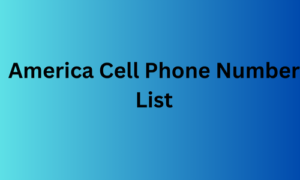Define your goals and objectives: Before you begin preparing, it’s important to clearly define what you want to achieve. Goals may include attracting new customers, increasing brand awareness, showcasing a new product, or collecting leads for future sales. Having specific goals will help you formulate your participation strategy and measure success after the event.
Know your audience: Conduct research to understand who will be attending the exhibition. Learn about the interests and needs of potential customers, which will help you tailor your offer and presentation materials.
Planning and Budgeting: Create a detailed preparation plan and budget. Consider the costs of booth rental, decoration, promotional materials, travel and accommodation for staff. Set deadlines for completing each task.
Booth Preparation: Your booth is the face of your company at the exhibition. Include strong visuals, interactive elements, and a comfortable space for communication. For example, Samsung often uses interactive panels and demonstration areas for its products at exhibitions.
Staff training: Your staff should be well trained and knowledgeable about the products and services. Provide training so that they can confidently communicate with visitors, answer questions, and demonstrate products. It is important that each employee understands their role and the purpose of participating in the exhibition.
How to effectively present your product or service
Visual appeal: Use bright and eye-catching elements such as banners, video presentations, and interactive screens. For example, at CES, LG used huge OLED screens to draw attention to its new TVs.
Live Demos: Show the product in action. Live demos always attract more attention than static displays. For example, at an automotive technology show, Tesla test drove its electric cars, which generated a lot of interest.
Attracting visitors with activities: Organize contests, giveaways, and free consultations. For example, at cosmetics exhibitions, companies often offer free makeup or product samples, america cell phone number list which attracts a large number of visitors.
Prepare presentation materials: Create informational brochures, catalogs, and business cards. Make sure they contain key information about your company and products. Use QR codes for a quick link to your website or online catalogs.
Interact with your audience: Communicate with your visitors, ask questions to understand their needs. Listen to them and offer solutions that can help them. Record your visitors’ contacts and interests for future interaction.
Post-Events: How to Maximize Results
Analyze Results: Conduct an analysis immediately after the show to assess whether your goals were met. How many new contacts were collected? What reactions did your products generate? What questions did visitors ask most often? Detailed analysis from exhibitors (on-site staff), clients, and visitors will help you better prepare for future events.
Follow-up with contacts: Reach out to new prospects and partners within a week of the event. Send thank-you notes , additional product information, and special offers for cooperation. This will help to reinforce the positive impression and increase the chances of converting into customers.

Internal evaluation and learning: Hold an internal meeting to discuss the results. Highlight successful aspects and areas for improvement. Share the lessons learned with the team and use them to prepare for the next events.
Continued Marketing Activities: Use the content collected at the exhibition for further marketing activities. Post photos and videos from the event on your website, social media, and corporate blog. Create joint content with stand “neighbors” who are not direct competitors, so that you can then tag other brands in your social networks and reach their target audience, expanding your reach. Prepare articles and press releases to maintain interest in your brand.
Assessing the return on investment (ROI): Calculate the ROI to understand how effectively the funds were spent. Compare the costs with the benefits received, such as the number of new customers, increased sales , or increased brand awa
